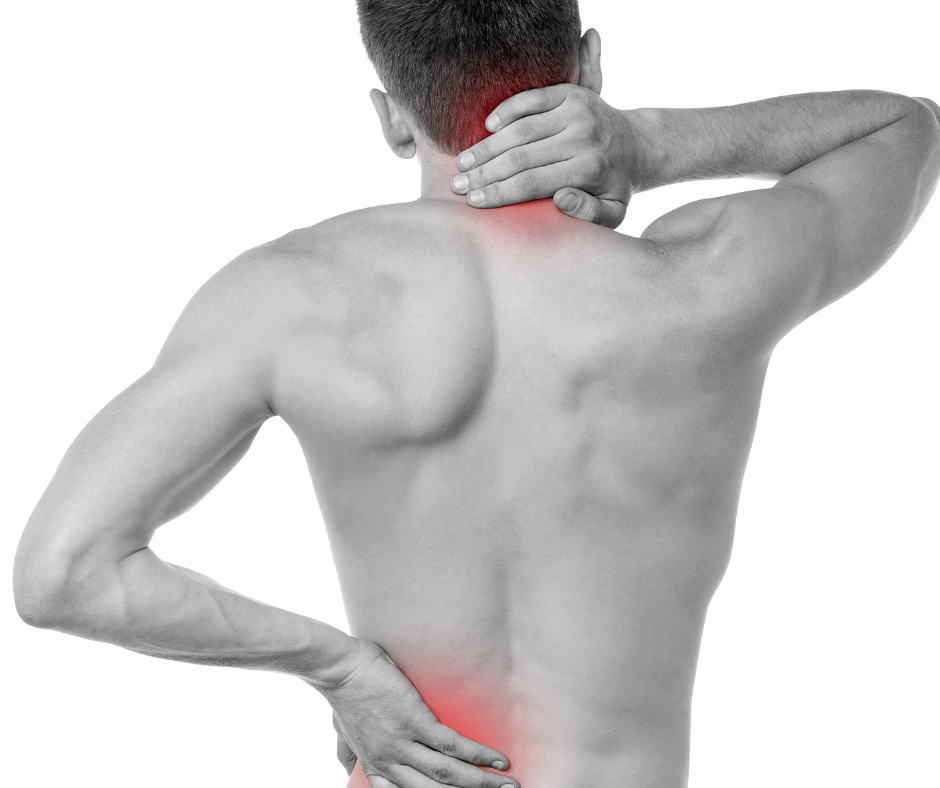Common Questions
Am I a Good Candidate for Non-Surgical Spinal Decompression Therapy?
What is Spinal Decompression?
Spinal decompression is a revolutionary computer-aided technology that helps treat the symptoms of low back and neck pain from herniated, bulging, degenerated and slipped discs. Spinal decompression is FDA-cleared and has been around for more than 15 years. There have been more than 10 successful research studies done on spinal decompression and there are currently more than 5,000 clinics in the U.S. and Canada that are performing spinal decompression treatments. Every day more and more clinics are adding spinal decompression as an alternative to surgery for patients suffering from herniated, bulging, degenerated, and slipped discs. Even when physical therapy, chiropractic, acupuncture, pain pills and shots have failed, most patients still receive dramatic pain relief in 4 to 6 weeks of spinal decompression.
Other Common Questions:
-
What Does Spinal Decompression Treat?
FDA cleared Spinal Decompression technology treats symptoms of back pain due to:
- Herniated Discs
- Bulging Discs
- Pinched Nerves
- Sciatica or Radiculopathy (leg or arm pain)
- Degenerative Discs
- Spinal Stenosis
- Facet Syndrome
- Post-Surgical Pain and more...
-
How Does Spinal Decompression Work?
Decompression is achieved by using a specific combination of force of pull, angle in the degree of pull, and varying time in order to create a negative pressure inside the discs of the spinal cord. This reversal of pressure creates a vacuum inside the disc that helps to draw in bulging discs and extruded disc material back into place, taking pressure off pinched or irritated nerves. Spinal experts believe that nutrients, oxygen, and fluids are drawn into the disc to create a revitalized environment conducive to healing for both herniated and degenerated discs. Based on the patient’s body weight, tolerance, level of severity, and duration of symptoms your spinal decompression specialist will determine a specific treatment plan based on your individual needs. This will help to ensure the best most long-lasting results.
-
What are the Treatments Like?
At the beginning of each session, you will be comfortably fitted with a harness designed to achieve optimal decompression of the low back or neck. During a session of spinal decompression, you will notice a slow lengthening of your spine as your discs are gradually decompressed and relieved of pressure. The treatment process is safe and relaxing. While some patients with extensively injured discs have reported mild discomfort during the first few treatment sessions, their discomfort generally subsides upon subsequent visits. A patient safety switch provides an extra safety feature, allowing you to stop at any point should you feel discomfort. Each treatment session lasts approximately 30 minutes.
-
What is the Typical Treatment Protocol?
A typical spinal decompression treatment protocol consists of about 20–24 sessions over four to six weeks. Some conditions require fewer visits; some require more. Many patients report relief from their pain and other symptoms during the first few treatment sessions and most experience dramatic pain relief after completion of their prescribed treatment program.
-
Why Would Spinal Decompression Work When Chiropractic, Physical Therapy and Traction Have Failed?
While traction, physical therapy, inversion tables, and manipulation may reduce disc pressures to as low as 40 mm Hg, only spinal decompression has been shown to achieve negative pressures within the spine. It has been clinically proven that spinal decompression creates negative pressures as low as -110 mm Hg3 within the injured disc during the treatment session. Normally, pulls exerted on the spine trigger sensory receptors in the back to tighten the muscles surrounding the vertebrae and discs in an effort to protect them from injury, a mechanism in the body known as the proprioceptor response. This typically includes muscle guarding and muscle spasms. Spinal Decompression bypasses this response by slowly pulling on the spine and relaxing the back over an extended period of time, allowing the discs to be repositioned without tension and without setting off muscle guarding and spasms. It is important for patients to make sure that they are treated on a high-quality spinal decompression table by a physician with years of experience and not an imitation spinal decompression table to ensure the best results.
-
If I Undergo Spinal Decompression Therapy, How Long Will It Take to See Results?
Based on years of spinal decompression experience and thousands of patients treated we have noticed that the overall success rate is around 80%. We consider this success rate to be very good considering most of our patients have “tried everything else” with minimal or no relief, are at least a 6/10 mVAS pain level, and have been experiencing their pain for greater than 6 weeks. About 20% of patients will start seeing relief of pain within the first week. Around 40% of patients will have significant relief within 2–3 weeks. The remaining 20% will get significant relief between 4–6 weeks. Less than 20% will experience no relief or minimal relief. Very rarely will a patient get worse.
-
Do I Qualify for Spinal Decompression Therapy Treatment?
The following conditions may qualify for spinal decompression treatment. Always consult your spinal decompression specialist to see if you are a candidate for spinal decompression therapy.
Candidates for spinal decompression therapy include the following:
- Diagnosis of a herniated, bulging, or degenerated disc
- Back pain persisting for more than three weeks
- Recurrent pain from a failed back surgery that is more than six months old
- Persistent pain from arthrosis
- Patients available for four to six weeks of the treatment protocol
- Patients at least 18 years of age
-
Who Doesn’t Qualify for Spinal Decompression Therapy?
The following conditions may disqualify a patient for spinal decompression treatment. Always consult your spinal decompression specialist to see if you are a candidate for spinal decompression therapy. Candidates that may not qualify for spinal decompression therapy include the following:
- Hardware in the spine such as screws and rods
- Pregnancy
- Prior lumbar fusion less than six months old
- Metastatic cancer (cancer that has spread to the bones)
- Grade 3 and 4 spondylolisthesis. Grade 1 or Grade 2 spondylolisthesis is treatable
- Recent compression fracture of the lumbar spine
- Pathologic aortic aneurysm
- Pelvic or abdominal cancer
- Disc space infections
Consult your physician if you have any questions about the conditions above or to find out if you would qualify for spinal decompression therapy.
-
Are there any Side Effects to the Treatment?
Most patients do not experience any major side effects. The most common side effect is a dull, achy soreness for the first week or two as the body becomes accustomed to being stretched and decompressed. Spinal decompression stretches muscles in a lengthening direction which the body is generally not used to.
Because of this patients may experience a dull, achy soreness that they often describe as “it feels like I just worked out for the first time in a long time.” Very rarely do patients have an increase in the pain that they came in with.
Patients with acute, severe disc herniations may experience some pain during the first week or two until the herniation retracts back in taking pressure off of the nerves. Acute disc herniation patients tend to experience more “up and down” types of relief from their pain for the first 2 weeks as an acute disc herniation can be slightly unpredictable. Regardless of the mild soreness experienced in the first week or two, most patients experience 50% relief or more of their pain around the end of the second week.
Overall Spinal Decompression Therapy is considered safe and comfortable. The system has emergency stop switches for both the patient and the operator. These switches terminate the treatment immediately if a patient experiences any increase in pain or discomfort during the treatment thereby avoiding most injuries.
-
Can Spinal Decompression be Used for Patients That Have had Spinal Surgery?
In many cases, Spinal Decompression treatment is not contra-indicated for patients that have had spinal surgery. In fact, many patients have found success with Spinal Decompression even after a failed back surgery. After a failed Laminectomy or Micro Discectomy patients may still respond favorably to spinal decompression. If a patient has had more than 3 laminectomies then the success rate of spinal decompression will go down. If a patient has had surgical fusion with rods or screws or any type of hardware then patients may not qualify for spinal decompression. Always consult your spinal decompression specialist to see if you qualify for spinal decompression therapy.
-
Can Shoulder Pain Actually be “Shneck” Pain?
Neck and shoulder pain often have overlapping symptoms because they are closely connected by many nerve pathways. Micro-injuries in the shoulder, which would typically heal quickly, are slow to convalesce if there is already an existing neck problem that is causing nerve root compression to the shoulder. Neck pain can also conceal a shoulder problem. This common overlapping of symptoms has led some doctors to refer to this as “Shneck” pain.
The mechanics of this overlapping is due to the frequent incapacity of the brain’s ability to identify the pain back to its source along the same pathways, causing referred pain.
When is it the shoulder and when is it the neck?
Although shoulder pain is most frequently caused by injuries to the tendons that stabilize the shoulder capsule (rotator cuff), the injuries may cause compensatory movement to protect the injured regions, which, in turn, will cause neck pain. This is not surprising if you consider that most connect directly to the cervical spine.
Shoulder or rotator cuff injuries
- Cause reduced range of motion and are especially painful at the end range
- Are often most painful when reaching up or behind you
- The pain quality is dull and is felt deep inside the shoulder joint itself
- Can radiate down into the upper arm but not usually past the elbow or into the hand
- Worsens with use and improves with rest
Neck Injuries
- Often radiates into the shoulder (usually one-sided) which feels like a ‘shoulder issue’.
- Pain quality is much sharper and can feel like a burning or electric sensation.
- Can produce pain and numbness and tingling all the way to the fingers.
- Can worsen with certain positions of the neck.
Neck and shoulder injuries can often have similar and overlapping symptoms. It’s important to see a specialist who can determine the cause of the symptoms and advise proper treatment.
Send Us a Message
Have a question? Oregon Spine and Disc is here to help. Send us a message and we’ll be in touch.
We will get back to you as soon as possible
Please try again later

All Rights Reserved | Oregon Spine and Disc

